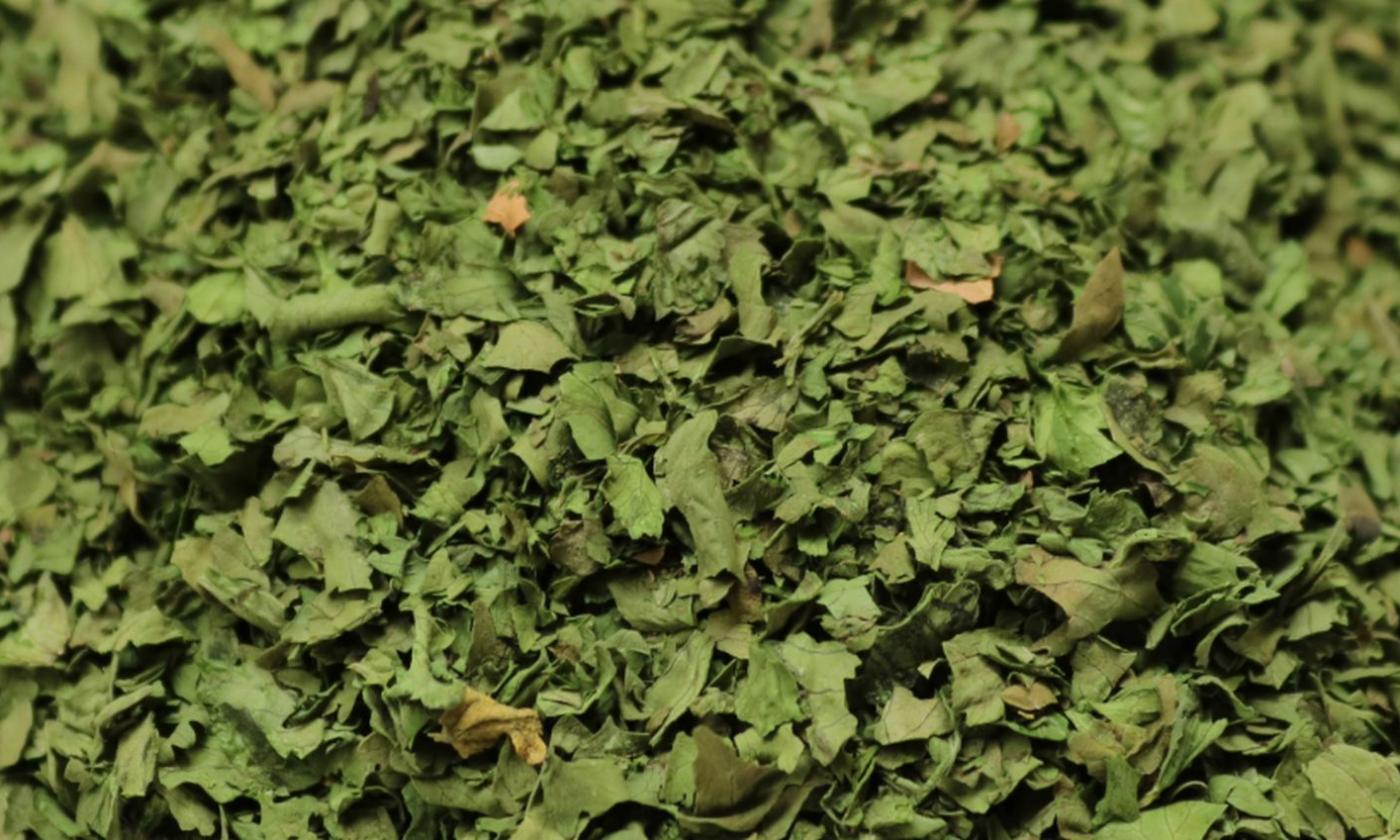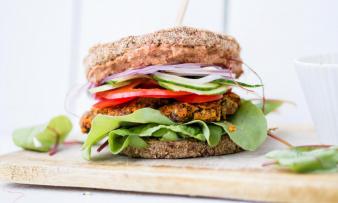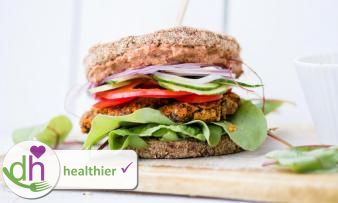Table of contents
The dried leaves of the common coriander ( Coriandrum sativum, also known as Asian parsley or common coriander) hardly have the typical aroma of fresh coriander leaves.
Use in the kitchen:
The taste of dried coriander leaves cannot be compared to that of raw, fresh leaves. If you don't have fresh coriander leaves on hand as a kitchen spice, they are a good alternative.
Dried coriander leaves can be used to season soups, sauces, chutneys, dips and pastes - as well as cooked vegetables such as carrots, peas or pumpkin. Dried coriander leaves also taste good with curry, rice noodle, potato, chickpea and lentil dishes. Since the aroma of coriander leaves evaporates very quickly, the fresh leaves are usually added just before serving.
Coriander leaves are very popular in Asian cuisine. Hence the name Asian parsley. Fresh coriander leaves are an essential part of Thai and Vietnamese cuisine in particular. In Europe, coriander seeds are more popular. They can be found in Indian and sometimes Arabic cuisine.
Vegan recipe for marinated zucchini:
1 kg zucchini, 2 bunches of spring onions, 1 piece of ginger, 50 g dates, 3 tbsp rapeseed oil, salt,pepper, 1 lemon, coriander (fresh or dried).
Cut the dates lengthways and mix with peeled, grated ginger. Cut the zucchini into thin slices and fry briefly in a pan with 1 tablespoon of rapeseed oil and season with salt and pepper. Briefly and gently fry the roughly chopped spring onions in the remaining rapeseed oil and season. Mix all the ingredients together and add the lemon juice. Let the zucchini sit for about 30 minutes. Just before serving, you can season the marinated zucchini with coriander leaves. 1
Tea made from coriander leaves:
To make tea made from dried coriander leaves, put 1-2 teaspoons of dried leaves in a cup and pour boiling water over them. After 10 minutes, strain the tea and drink it in small sips. Coriander tea stimulates the appetite and helps with gastrointestinal problems.
| Not only vegans or vegetarians should read this: Vegans often eat unhealthily. Avoidable nutritional errors. |
Shopping - where to buy?
You will hardly find dried coriander leaves in major retailers such as Coop, Migros, Denner, Volg, Spar, Aldi, Lidl, Rewe, Edeka, Hofer etc. Some supermarkets offer freshly cut coriander or even potted plants.
You can buy dried coriander leaves in health food stores, organic shops, Asian shops or Indian shops. In general, we recommend that you make sure the spice is organically grown, even if you order it online.
Homemade preparation:
Coriander should be harvested for drying before it flowers. The aroma of the coriander leaves is at its best then. A rain-free morning is ideal for harvesting, and if possible there should be sunshine 1-2 days beforehand. The aroma is weakest at night and on rainy days. Before drying the herbs, you should avoid washing them thoroughly after harvesting. Otherwise the drying process will be delayed.
Shaking the herb will remove dust and dirt. If you do have to wash the coriander leaves, you must carefully dry them with kitchen paper. You should not chop the plant when it is fresh, as the essential oils can escape.
The most gentle drying method is in the air. Although it takes the longest, the ingredients are best preserved this way. To do this, tie the coriander herb into small bundles and hang the bundles upside down in a warm, sheltered and shady place. Direct sunlight is not beneficial and temperatures should be below 35 °C. Above this, the essential oils evaporate. The drying process should be complete after 3-4 days.
With a dehydrator or device you can dry herbs at temperatures between 30 and 50 °C. The lower the temperature, the more likely it is that valuable ingredients will be preserved. Herbs can also be dried in the oven at these low temperatures, but you should expect a loss of aroma. For faster drying, it is usually necessary to chop the herbs up a little beforehand.
Start at 30 °C and towards the end switch to max. 50 °C. When drying in the oven, always leave a small gap open so that the moisture can escape. The herbs should be dry after about 3 hours. 2
Found in the wild:
Coriander can also be found growing wild in areas around the Mediterranean, in Asia and America. However, a wild form is not known. North of the Alps it also grows on fallow land in milder areas. 3
Storage:
Dried coriander leaves should be stored in a cool, dry and dark place. Aluminum spice jars are ideal for this. If kept tightly closed, the herb will last for about a year.
Ingredients - nutritional value - calories:
As with many dried spices, the vitamins and minerals are very high compared to fresh herbs. However, people usually only consume small amounts of spices.
The vitamin K content of dried coriander leaves is around 1360 µg per 100 g. 4 The daily requirement is 70 µg 5. This means that 5.1 g of dried coriander leaves cover our daily requirement of vitamin K, but even such a small amount is still a lot for a dried spice. Dried parsley has the same amount of vitamin K and dried thyme has a little more.
The vitamin C content is also impressive: 567 mg of vitamin C are contained in 100 g of dried coriander leaves, hardly any other dried spice has that much. Here, 5 g cover about 1/4 of the daily requirement of vitamin C. For comparison: the vitamin C content of raw sea buckthorn berries is 450 mg/100g. 4
Dried coriander contains 4466 mg of potassium per 100 g. Many dried spices have a high potassium content. Sun-dried tomatoes are also in this league with 3427 mg/100 g.
Dried coriander leaves contain 6.4 mg/100g of the trace element manganese, a similar level to fennel seeds (6.5 mg). Iron is also in the notable range at 42 mg/100g. Bay leaves, for example, contain 43 mg/100g.
Dried coriander leaves also contain valuable magnesium, calcium and folic acid. 17
Coriander contains essential oil, most of which is found in the seeds. The leaves also contain essential oils, but only very little in comparison. They consist of 85-95% aliphatic aldehydes. These oils are used in both naturopathy and conventional medicine. 6
Health aspects - effects:
When used internally, essential coriander oil has a flatulence-relieving, digestive and circulation-stimulating effect. The antibacterial and fungicidal effect is due to the main ingredient linalool. 7
Externally, this antibacterial effect is evident on the skin in the case of acne and pimples. 8 Coriander oil also has an antibacterial and plaque-reducing effect when used as a mouthwash. 9
Studies on the antibacterial effect of coriander oil against multi-resistant disease-causing bacteria (MRSA: Multi-Resistance Staphylococcus Aureus) are still ongoing. 8
Dangers - Intolerances - Side effects:
Please never apply pure coriander oil to the skin, the oil can have an extremely irritating effect on our skin. Possible carrier oils are: purified apricot or almond oil. 10 drops of coriander oil in 10 ml of carrier oil is a good recommendation. 6
There are allergic reactions or intolerance symptoms when consuming coriander. These reactions are similar to those seen with other umbelliferous plants.
Cross-reactions are also possible with coriander. This is called mugwort-celery-spice syndrome. This means that people who are allergic to mugwort pollen often also react to celery, carrots, fennel, artichokes, chamomile, pepper, mustard, dill, parsley, coriander, caraway, anise or sunflower seeds. 16
Why does coriander taste like soap? Some people even find it disgusting and compare the taste to the smell of bugs. This aversion could be genetic or based on the similarity to the aroma of soap (the aldehydes in coriander are also found in soaps in a similar way) - but you can also learn to like the taste. 10
Folk medicine - natural medicine:
In folk medicine, essential coriander oil is used against athlete's foot, for detoxification, for bladder infections, against fatigue, for headaches and muscle tension. Coriander oil is also used for rheumatic pain or arthritis.
Occurrence - Origin:
Coriander is probably native to the Middle East, where it was used as a spice and medicinal plant. In ancient times, it was considered a poisonous plant, but was also used as a medicinal plant for plague and epilepsy. 11 The Romans probably brought coriander to the area north of the Alps over 2000 years ago. 3
Coriander is cultivated almost worldwide: in Central, South and North America - especially in Mexico, but also in Africa, Europe and Asia. 12
Cultivation - Harvest:
Coriander is not very demanding, it grows in partially shaded and sunny locations, but it should be sheltered from the wind. It loves nutrient-rich, loose soil with good water retention capacity.
The annual herb has a very different shape depending on its age. The young leaves are round and look similar to flat-leaf parsley. Older leaves are typically feathery and clearly notched. Depending on the location, the plant reaches between 30 and 130 cm. Each umbel has five white to cream-colored petals, which contain about 3-5 pink to white stigmas. 2
Growing in the garden or as a potted plant:
In the garden, you should be careful not to plant coriander next to other umbelliferous plants such as chervil or parsley. The soil must be loosened and weeded regularly. Since the leaves lose their aroma after flowering, the leaves should be harvested before this. 2
Danger of confusion:
Externally, raw coriander leaves can easily be confused with flat-leaf parsley. Coriander is also called Indian or Chinese parsley. However, the smell and taste of coriander and parsley are very different and almost unmistakable.
Animal protection - species protection - animal welfare:
Umbelliferous plants are suitable plants for butterfly caterpillars. The swallowtail butterfly in particular lays its eggs on umbelliferous plants so that the caterpillars have a suitable source of food immediately after hatching. 13
General information:
The true coriander ( Coriandrum sativum ) belongs to the family of the Umbelliferae (Apiaceae). Its name comes from the Greek, where "k ó riandron/koriannon" means bug-tail. The original long coriander ( Eryngium foetidum, also an Umbelliferae) is native to the Anglo-American region. It is called cilantro, culantro or Mexican coriander. 14
In the cosmetics industry, coriander is of interest for perfume production. Its warm, aromatic and spicy scent harmonizes or rounds off certain ingredients.
Alternative names:
Coriander is also called: Arabian parsley, Asian parsley, Chinese parsley, garden coriander, cultivated coriander, spice coriander, Indian parsley, kaliander, dizzy grain, dizzy herb, stinking dill, wall lice herb, bug dill, bug herb, bug caraway.
Wikipedia gives a lot of common names: Böbberli, Calander, Cholinder, Chollantir, Chullantar, Ciriander, Clander, Cölegrase, Colander, Cliander, Coliandur, Collindir, Coreandrencraut, Coriandercrude, Coriandercrut, Corianderkernlein, Corianderkraut, Coriander, Corandern, Coriandre, Corrander, Creander, Galander, Galiander, Goliander, Holenter, Holunter, Holundir, Kalanner, Klanner, Kolander, Kolgras, Koliander, Kolinder, Koller, Krollo, Kullandar, Luopi, Luppi, Pöperli, Rügelikümmi, Wantlusenkrut, Wanzelkraut, Wankendill. 15
Literature - Sources:
Bibliography - 16 Sources (Link to the evidence)
| 1. | Eatsmarter.de Mariniertes Ingwer-Zucchini-Gemüse. |
| 2. | Kraeuter-buch.de Koriander. |
| 3. | Mabey R. Essbar Wildpflanzen, Pilze, Muscheln für die Naturküche. Haupt Verlag: Bern, Stuttgart, Wien. 2013. |
| 4. | USDA United States Department of Agriculture. |
| 5. | DGE Deutsche Gesellschaft für Ernährung e.V. |
| 6. | Ätherisches-Öl.com Korianderöl. |
| 7. | Rüben C. Antimikrobielle Wirksamkeit von chemischen Einzelkomponenten ätherischer Öle gegenüber ausgewählten Lebensmittelverderbniserregern. Diss. Stiftung Tierärztliche Hochschule Hannover. 2009. |
| 8. | Silva F, Ferreira S, Queiroz JA, et al. Coriander (Croiandrum sativum L.) essential oil: its antibacterial activity and mode of action evaluated by flow cytometry. J Med Microbiol. 2011;60(10). |
| 9. | Burghartz J. Korianderöl als Mundspüllösung: Klinische Untersuchung zur antibakteriellen und plaque-reduzierenden Wirkung auf den 4-Tages-Plaque-Aufwuchs. Diss. Universitätsklinik für Zahn-, Mund- und Kieferheilkunde Freiburg. 2010. |
| 10. | Eriksson N, Wu S, Do CB, et al. A genetic variant near olfactory receptor genes influences cilantro preference. Cornell University Genomics. 2012. |
| 11. | Delaveau P, Lorrain M, Moriter F, et al. Geheimnisse und Heilkräfte der Pflanzen. Das Beste: Stuttgart. 1978. |
| 12. | Seidemann J. World spice plants. Springer. 2005. |
| 13. | Naturschutz.ch Nahrungsquellen für Schmetterlinge. |
| 14. | Wikipedia Echter Koriander. |
| 15. | Pritzel GA, Jessen C. Die deutschen Volksnamen der Pflanzen. Neuer Beitrag zum deutschen Sprachschatze. Cohen Philipp. Hannover 1882. |
| 16. | Aha! Allergiezentrum Schweiz Kreuzreaktionen. |










Comments